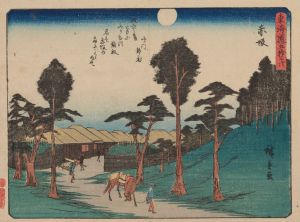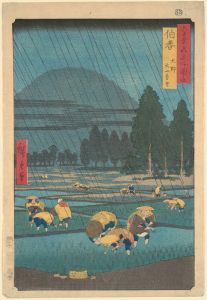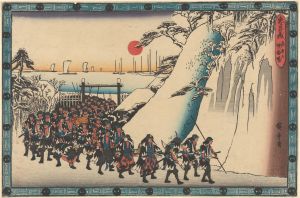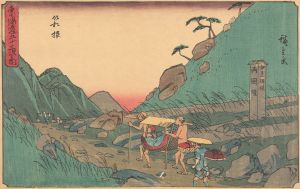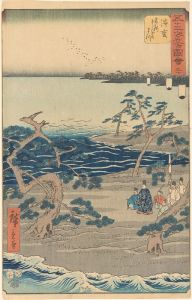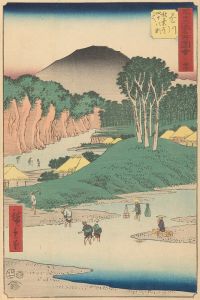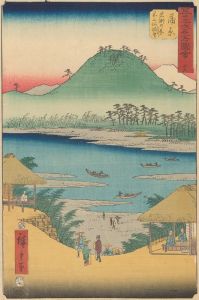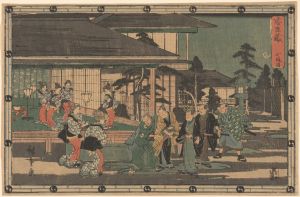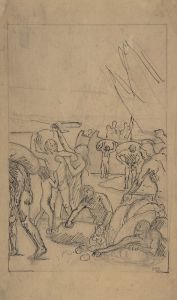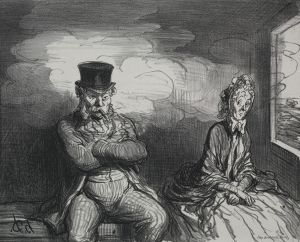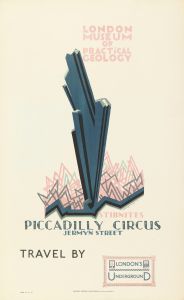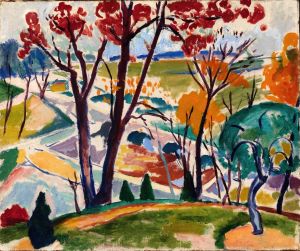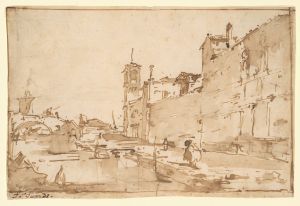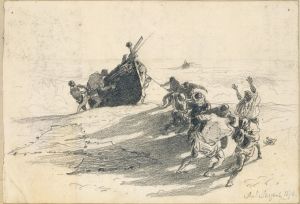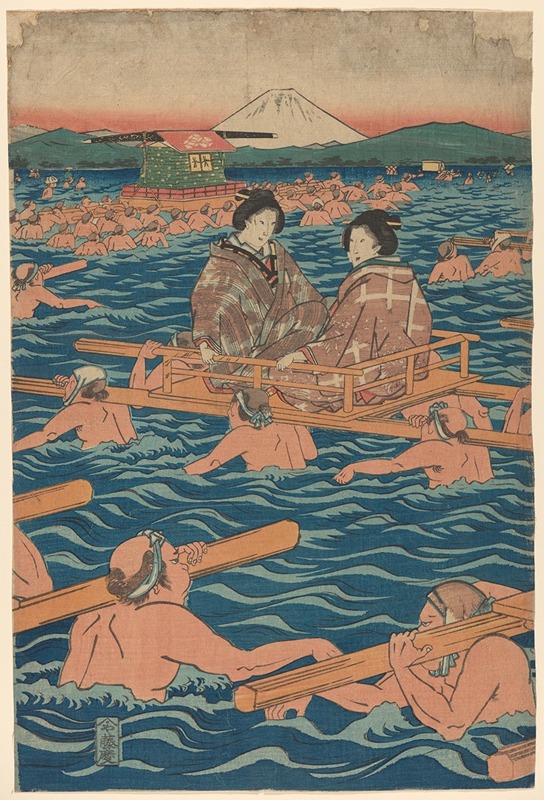
Fording a Broad River
A hand-painted replica of Andō Hiroshige’s masterpiece Fording a Broad River, meticulously crafted by professional artists to capture the true essence of the original. Each piece is created with museum-quality canvas and rare mineral pigments, carefully painted by experienced artists with delicate brushstrokes and rich, layered colors to perfectly recreate the texture of the original artwork. Unlike machine-printed reproductions, this hand-painted version brings the painting to life, infused with the artist’s emotions and skill in every stroke. Whether for personal collection or home decoration, it instantly elevates the artistic atmosphere of any space.
Andō Hiroshige (1797–1858) was a prominent Japanese ukiyo-e artist, renowned for his landscape prints and depictions of everyday life during the Edo period. One of his works, Fording a Broad River, exemplifies his mastery of the ukiyo-e tradition and his ability to capture the beauty of nature and human activity in harmony.
This artwork is part of Hiroshige's celebrated series The Fifty-Three Stations of the Tōkaidō (Tōkaidō Gojūsan-tsugi), which he created following his journey along the Tōkaidō road in 1832. The Tōkaidō was the main route connecting Edo (modern-day Tokyo) to Kyoto, and it was dotted with fifty-three official post stations. Hiroshige's series, first published in 1833–1834, portrays scenes from these stations, offering a glimpse into the landscapes, travelers, and daily life along this important route.
In Fording a Broad River, Hiroshige depicts travelers crossing a wide river, likely one of the many rivers encountered along the Tōkaidō. The scene is characterized by its dynamic composition, with figures wading through the water or being carried on the backs of porters. The use of perspective and the careful arrangement of the figures create a sense of depth and movement. The natural elements, such as the flowing water and the distant landscape, are rendered with Hiroshige's signature attention to detail and subtle use of color.
The print reflects the challenges faced by travelers during the Edo period, as bridges were not always available, and crossing rivers often required physical effort or the assistance of local ferrymen and porters. This aspect of travel is a recurring theme in Hiroshige's work, highlighting the interplay between humans and their environment.
Hiroshige's The Fifty-Three Stations of the Tōkaidō series was highly influential and remains one of the most iconic examples of ukiyo-e art. It not only documents the geography and culture of Edo-period Japan but also demonstrates Hiroshige's skill in capturing fleeting moments of beauty and the essence of a journey. Fording a Broad River is a testament to his ability to combine artistic technique with storytelling, creating a vivid and enduring image of life along the Tōkaidō road.





